|
April 17 In the morning just after dawn I explored the fields adjacent to Dana village. The fields, once used to grow various nut and fruit crops are now mainly used as pasture for goats but there is water and Mediterranean-type scrub as well as taller trees. There were typical Mediterranean birds such as Eurasian Blackbird, Great Tit, Greenfinch, Goldfinch, Sardinian Warbler, Woodchat Shrike and Hoopoe, as well as the more localised Palestine Sunbird. I disturbed a party of eight Chukars in a rocky field. Several Eastern Olivaceous Warblers were in song, some from exposed perches, unlike the two or three Cetti’s Warblers that I heard but didn’t see. There were also the now-expected migrant Lesser Whitethroats and Eurasian Blackcaps in small numbers, as well as my only Common Nightingale of the trip. From Dana, we drove ninety minutes to Petra and spent the rest of the day exploring the rich historical site. Although, of great archaeological and scenic interest, the site seemed relatively unproductive bird-wise. Two Brown-necked Ravens flew over before we got to the siq. High over the mausoleums I saw two Long-legged Buzzards in flight and had brief views of an Eastern Mourning Wheatear outside the grounds of the Petra Guest House on our return. Apart from those, there were a few common birds but no sign of the Sinai Rosefinch which is one of the special species of the site. Petra is mainly made up of hundreds of mausoleums created by the Nabateans over 2,000 years ago. Many are simple tombs in caves, but others are ornate structures carved out of sandstone cliff faces. The entrance to Petra is along a kilometer-long narrow canyon known as the siq. April 18th We walked the main trail at Petra again, but began earlier in the morning before the heat of the day set in. Five swifts flew low over the sandstone cliffs enabling positive identification as Pallid Swifts. At the end of the main trail, I took the steps up along a steep-sided wadi to the tomb known as the Monastery. Here the landscape opened out into a small area of sand and gravel desert where I found six Sinai Rosefinch feeding at the base of a cliff. There were also four Eastern Mourning Wheatears up there. April 19th Our final destination was Wadi Rum, an area of sandy desert and red sandstone mesas; a dramatic landscape familiar from the movie Lawrence of Arabia and, more recently, The Martian. We stayed in a tented camp and took the more or less obligatory four-wheel-drive truck excursion to sites of interest. Again, bird diversity was frustratingly low. There were the odd Brown-necked Ravens, Pale Crag Martins, Desert Larks and Tristram’s Starlings. Things picked up briefly at the ruins of the house where T E Lawrence stayed in 1917: a White-crowned Wheatear was singing on the cliffs above the ruin. Elsewhere in the desert a Sinai Rosefinch flew overhead calling and we disturbed a Sand Partridge. I also notched up a couple of Eastern Mourning Wheatears, but on the whole felt disappointed with the tally.
We returned to the camp site in late afternoon. The grounds were small, but there was a large woodpile in one corner with a small muddy channel adjacent to it and tamarisk bushes close by. Also, a broken pipe near the boundary fence had left a small pool of water and a small, dense patch of grass and flowers had grown around this puddle. This combination of water and cover proved attractive to a few migrants. I found three Eurasian Blackcaps and a Lesser Whitethroat in the woodpile, a Masked Shrike among the tamarisks and a male Ortolan Bunting close to the puddle. There were at least ten Sinai Rosefinch in the grounds as a well as a Desert Lark and a Scrub Warbler. April 20th I was up at dawn and walked the grounds again before heading out to photograph the desert landscape. In addition to the birds I had seen the afternoon before, I discovered an Eastern Olivaceous Warbler and a Thrush Nightingale. Both of these gave good views – a result of the limited amount of cover available. The Sinai Rosefinch were also approachable and were feeding on uncleared plates outside one of the entertainment tents. Although House Sparrows were present in Wadi Rum village three or four kilometres away, they had not yet reached the campsite and it seemed that the rosefinch were filling the ecological niche that would normally be taken up by the sparrows. And as we were leaving the site, I came upon a White-crowned Wheatear feeding on the ground before it flew up to a high rock and began singing. Tariq drove us back north to Amman where we overnighted before flying back to Hong Kong.
1 Comment
April 15 The weather cleared. After a day spent in Amman, we drove towards the Dead Sea, stopping at Madaba and Mount Nebo en route. There were a couple of Eurasian Jays in the trees in front of St George’s Church in Madaba and a Woodchat Shrike and two Eastern Black-eared Wheatears near Mount Nebo. I had booked a room for us at the Sehatty Hotel which was on a hillside overlooking the Dead Sea. This hotel was cheap; I could not afford the luxury spa hotels that front the Dead Sea itself. After lunch, my wife and daughter went down to one of these spas for an expensive float in the water, leaving me to my own devices. I walked up the stony hillside behind the hotel, following a water pipe along a line of acacia trees up to a thicker clump of vegetation. I found a small pool of water here. There were several migrant Lesser Whitethroats and Eurasian Blackcaps in the vegetation, as well as a single Common Chiffchaff and a Wood Warbler. Resident Palestine Sunbirds were also present, as well as a few Green Bee-eaters. Above the spring, the desert opened out and there was a high escarpment towering above a tarmac road. 40+ Pale Crag Martins were flying around the hills as were several Red-rumped Swallows plus a number of swifts, including a Little Swift. I also saw two Long-legged Buzzards. Following the road back down to the hotel, I encountered a few typical resident desert species: Desert Lark, Tristram’s Starling, Blackstart, Sand Partridge and Striolated Bunting. It seems the hotel is built over a hot spring. I followed the road below the hotel and here there was running water and tomato and marrow fields. The road was lined with high hedges. Here, there were a few more Palestine Sunbirds, Eurasian Blackcaps and Lesser Whitethroats, as well as a Masked Shrike and a Southern Grey Shrike. April 16th At daybreak, I did the same walk as described above. There seemed to have been an arrival of migrants overnight; I counted at least 25 Lesser Whitethroats and 50 Eurasian Blackcaps. New birds were three skulking Thrush Nightingales, six Collared Flycatchers and an Eastern Olivaceous Warbler. After breakfast, we drove south to the end of the Dead Sea and then headed southwest to Dana in the central highlands. Dana village dates back to the 15th century and is perched on a hillside overlooking a deep-sided wadi. Most of the inhabitants moved out to the plateau above, where living conditions are far more convenient, in the 1960s and now the stone houses are deserted although a few have been converted into guest houses for the visitors who take in the Dana Biosphere Reserve as part of the Jordan experience. There are a number of strenuous hikes in the reserve, but we just walked down the hairpin dirt track to the floor of the wadi in the heat of the afternoon.
The most obvious birds because of their aerial manoeuvres and constant calls were Tristram’s Starlings. Pale Crag Martins were also much in evidence. Apart from these it was generally quiet, but I did see a Short-toed Eagle quartering the hillsides, Common Kestrel, one or two Alpine Swifts and a Blue Rock Thrush. The Rock Doves looked like the genuine article. A distant Common Cuckoo called. There were a few more birds on the long slog back up the track in the late afternoon. Highlights were four Cretzschmar’s Buntings and three Syrian Serins (a speciality of the area), plus a Scrub Warbler, seven European Bee-eaters and four Eastern Black-eared Wheatears. My wife and I flew to Amman, Jordan on April 11 to visit our daughter who is currently working there. During our ten-day stay, we did the usual tourist things and I managed to fit in some casual birding on our travels. April 12th We were taken by our driver, Tariq, to Jerash, an hour’s journey north of Amman. Although the site dates back 6,500 years, it is most famous for its Roman remains, being one of the largest, best-preserved ancient Roman cities outside of Italy. When we were there, it was hot and dusty and was over-run by hundreds of Jordanian schoolgirls on end-of-term trips. The northern part of the site, however, was greener and quieter and offered some respite from the crowds after we had covered the main attractions in the south. The most obvious birds in the area – and indeed throughout the country – were Feral Pigeons and House Sparrows; the latter were nesting in holes on the ancient columns. Hooded Crows flew overhead. Sardinian Warblers and Graceful Prinias sang in the scrubland, and I also heard a Hoopoe singing. Crested Larks were fairly common and I counted at least three Eastern Black-eared Wheatears in the less disturbed areas. The Mediterranean feel to the landscape was enhanced by at least three Blue Rock Thrushes perching on the rocky Roman remains. The best bird, however, was a Lesser Spotted Eagle that flew overhead; my heavily cropped photographs reveal that the bird was ringed. Apart from the birds, lizards were much in evidence, basking on the rocks in the mid-day sun. I saw the Starred Agama elsewhere in Jordan but Jerash was the only site where I came upon the Northern Fan-footed Gecko. April 13 We drove east through flat gravel plains to visit a string of small desert “castles” – as well as to pay a brief visit to Azraq Wetland Reserve. Unfortunately , there was no time to explore the gravel plain properly. At Qasr Kharana, there were the ubiquitous pigeons and sparrows. I saw five Black Kites perched on the ground in the distance. Three migrant House Martins flew around the deserted building and there were a couple of Lesser Whitethroats feeding in the low scrub. Qusayr Amra held a couple of Crested Larks, a Lesser Whitethroat and a Hoopoe. And so to Azraq. This oasis was once one of the most important sites for wetland birds in the Middle East. It used to cover an area of 12,710 sq. km. In February 1967, 347,000 birds were recorded. Since then, in what must be one of the great environmental tragedies of the twentieth century, the wetlands have been almost totally drained – mainly to provide drinking water for the expanding urban areas in the north. All that remains at the wetland reserve is a couple of small ponds containing a handful of Coots and Moorhens. (Think of Mai Po, mud flats included, dried up and reduced to the two ponds that used to house the waterfowl collection.) In an attempt, to improve the situation, water is continuously being pumped into the reserve but there are hundreds of illegal deep wells in the area that take out more water than is being pumped in.
It takes half an hour or so to walk along the boardwalk that circles through the dried up area and the remaining small ponds from the small reserve headquarters. When I was there, a sandstorm had blown up from the south, reducing visibility and making being out in the open unpleasant. In spite of all of this, there were some birds to be seen: a single Squacco Heron, a Purple Heron and a Spur-winged Lapwing were the only water birds of note, but a dark morph Western Marsh Harrier flew over the small reed bed and there were a number of migrant Red-rumped Swallows and Sand Martins feeding over the pools and other migrants in the surrounding vegetation including Masked Shrike, Eurasian Wryneck, Eurasian Reed Warbler, Eurasian Blackcap and Common Chiffchaff. Also present were resident Laughing Doves and White-spectacled Bulbuls – both species seen commonly during my journey. We drove back to Amman. The wind had gotten stronger and visibility was poor because of the blown sand. It also began to rain, making road conditions even worse. |
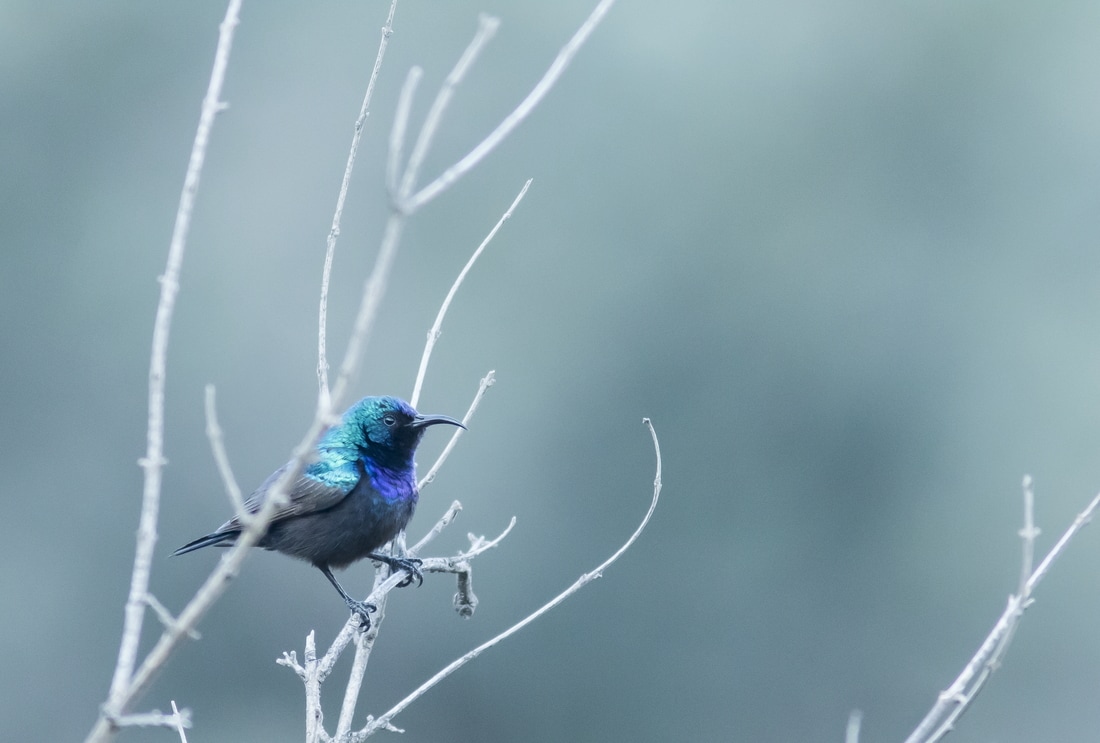
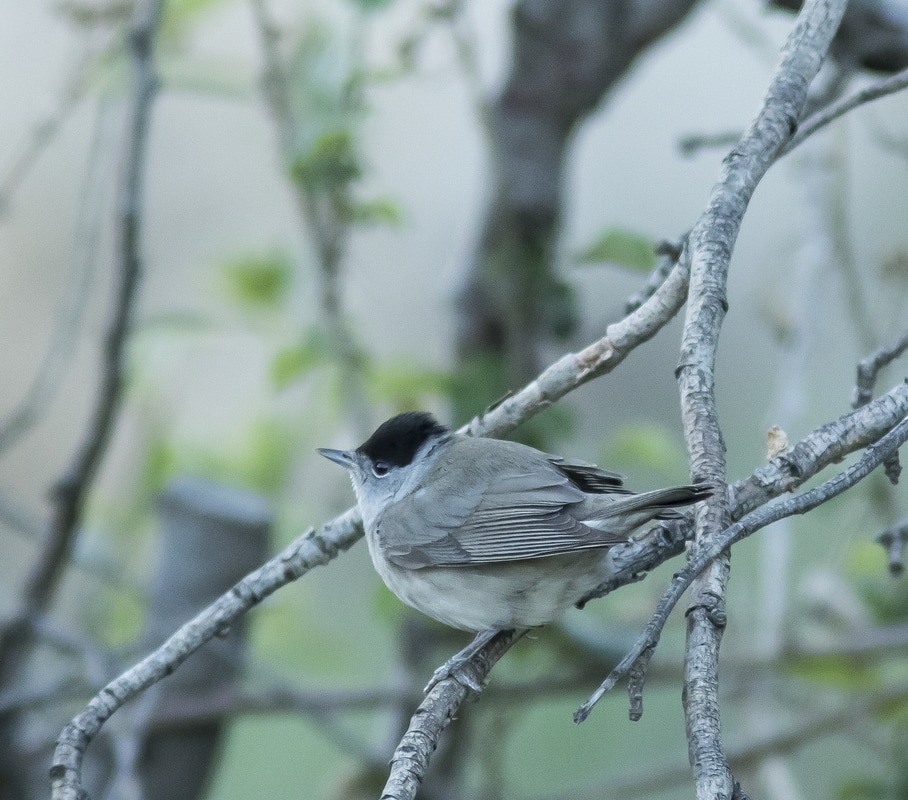
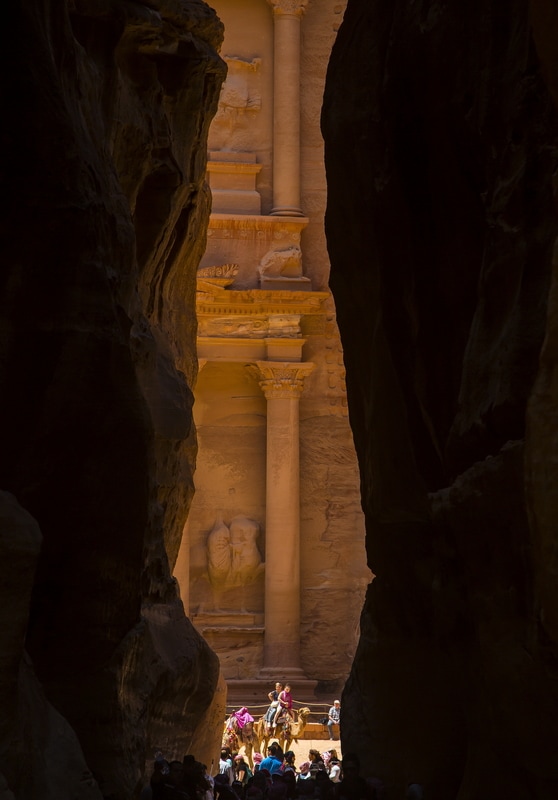
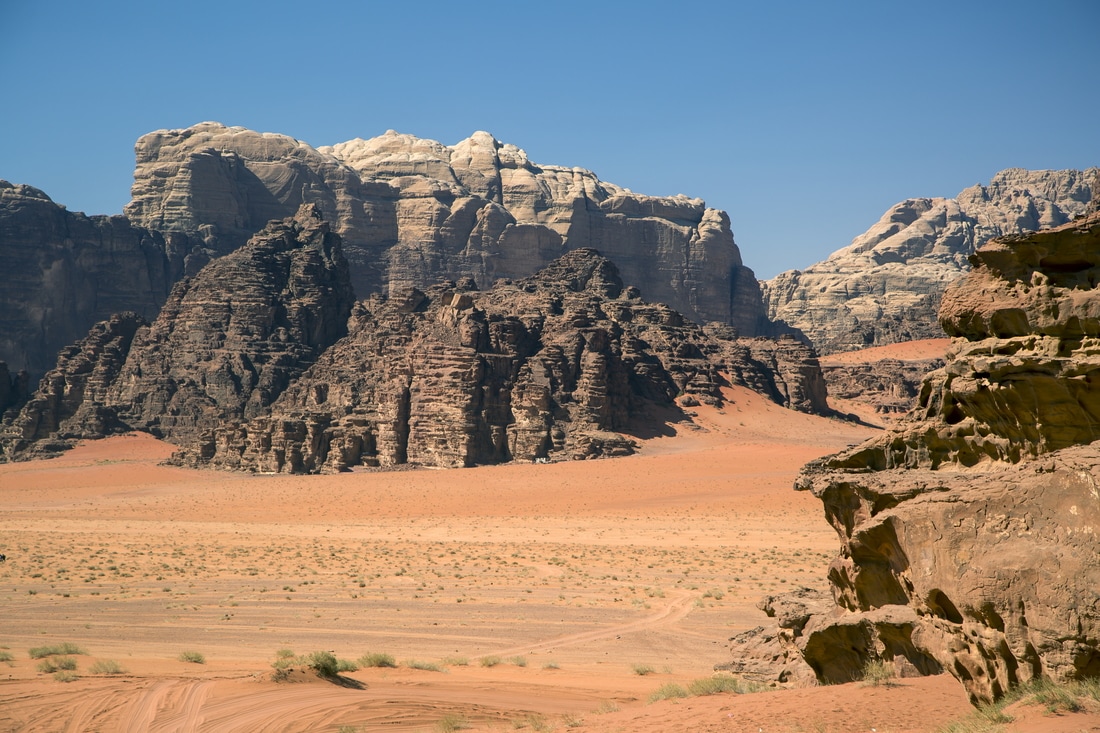
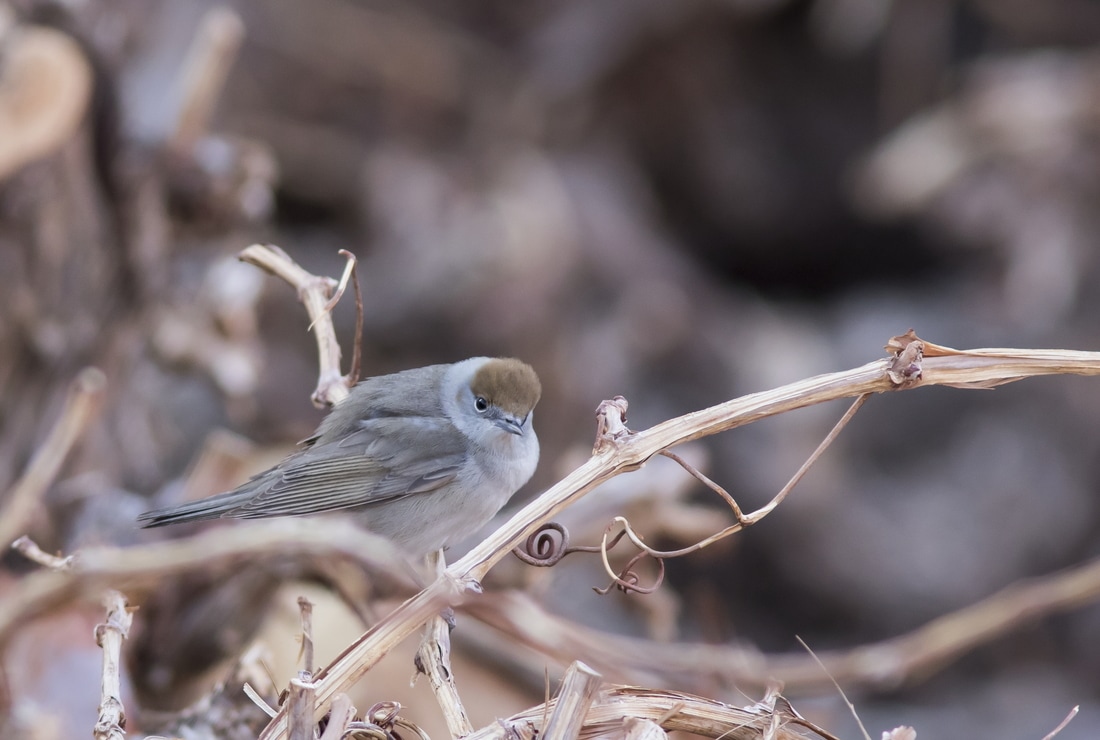
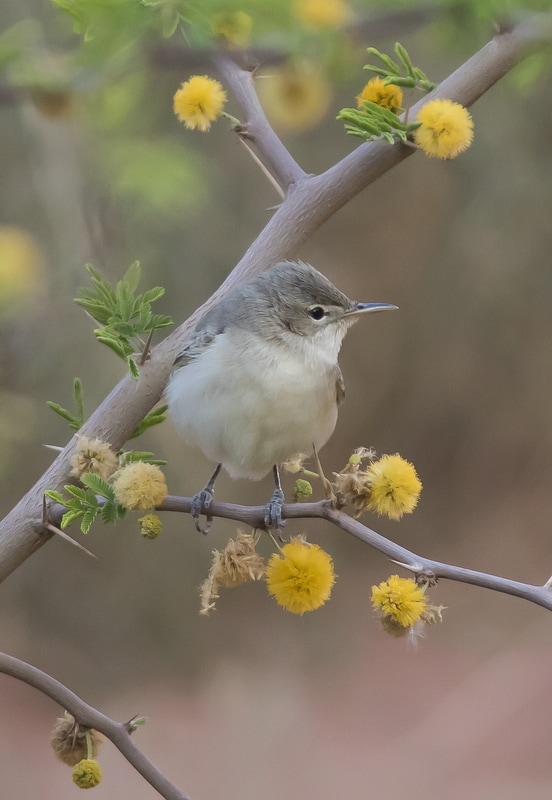
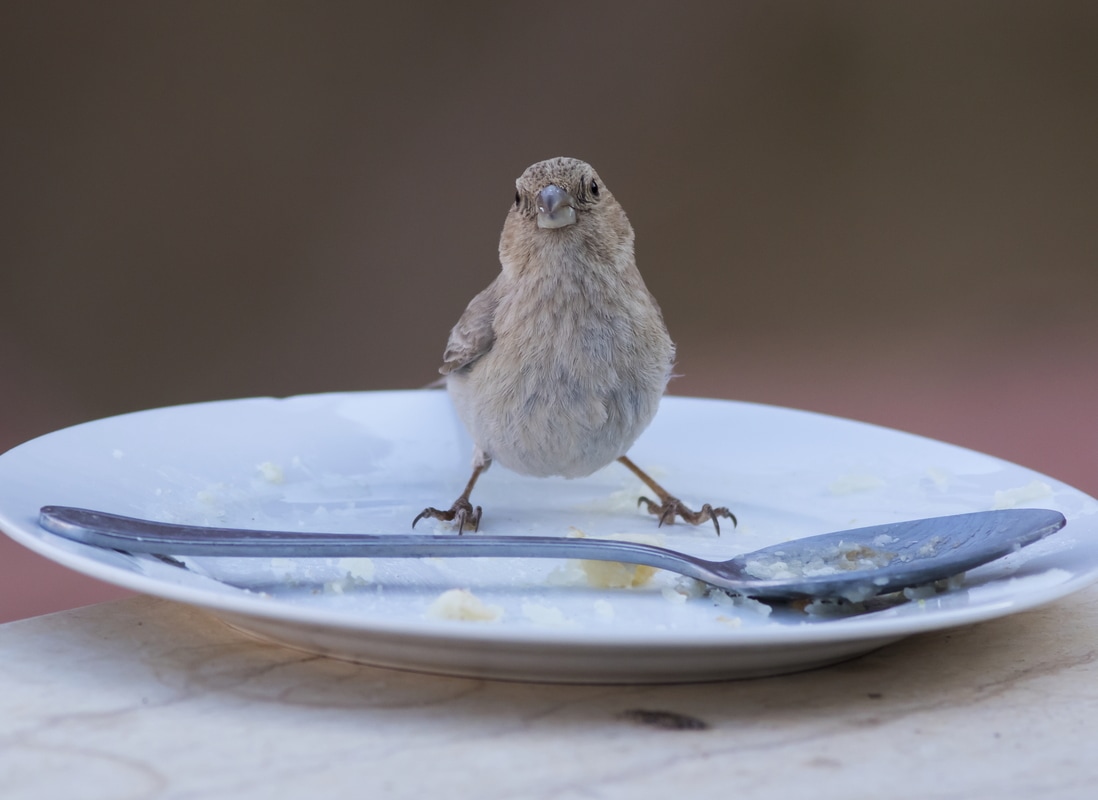
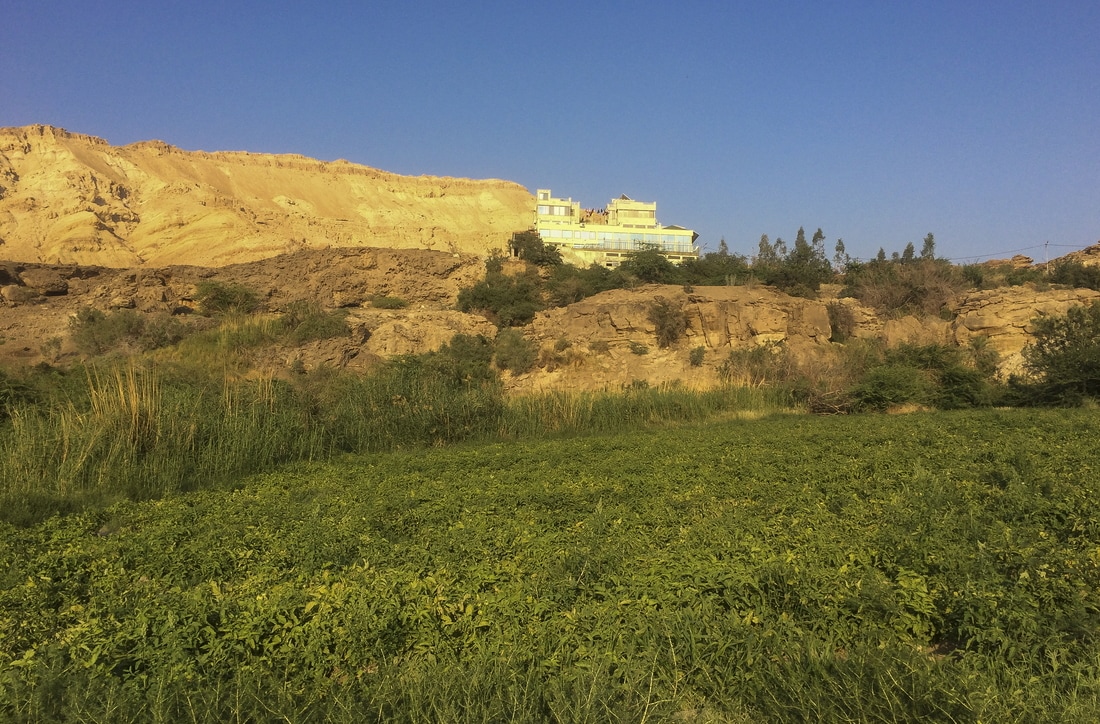
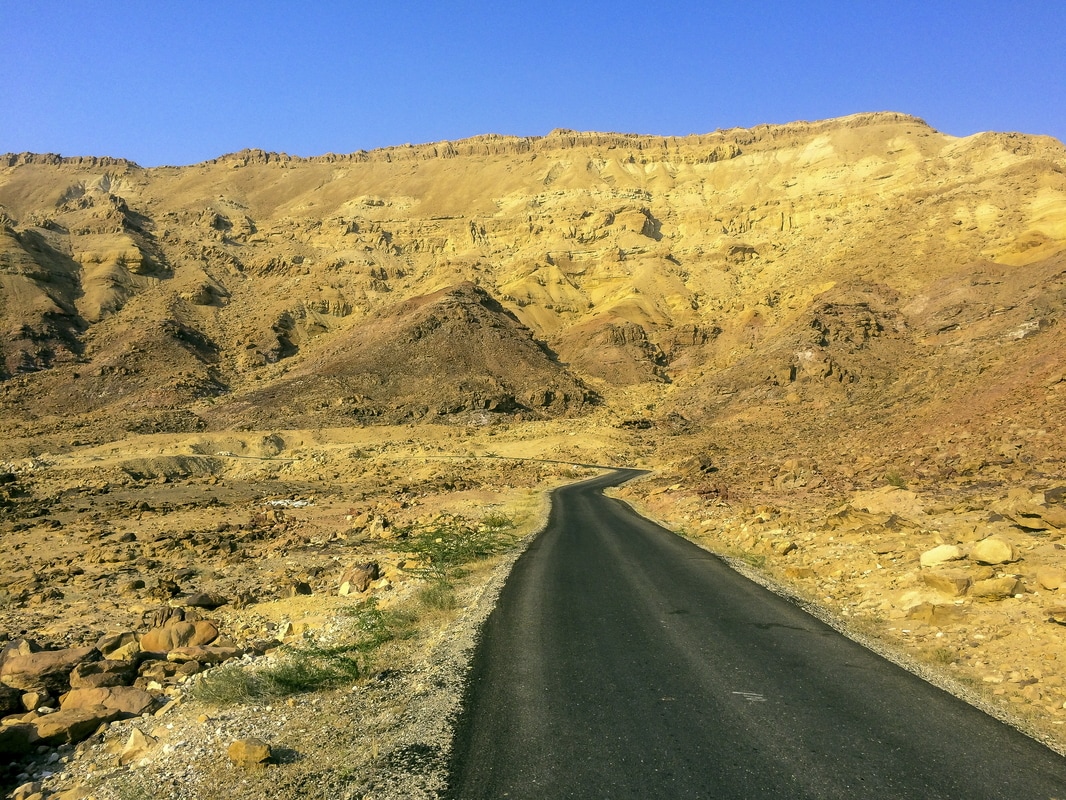
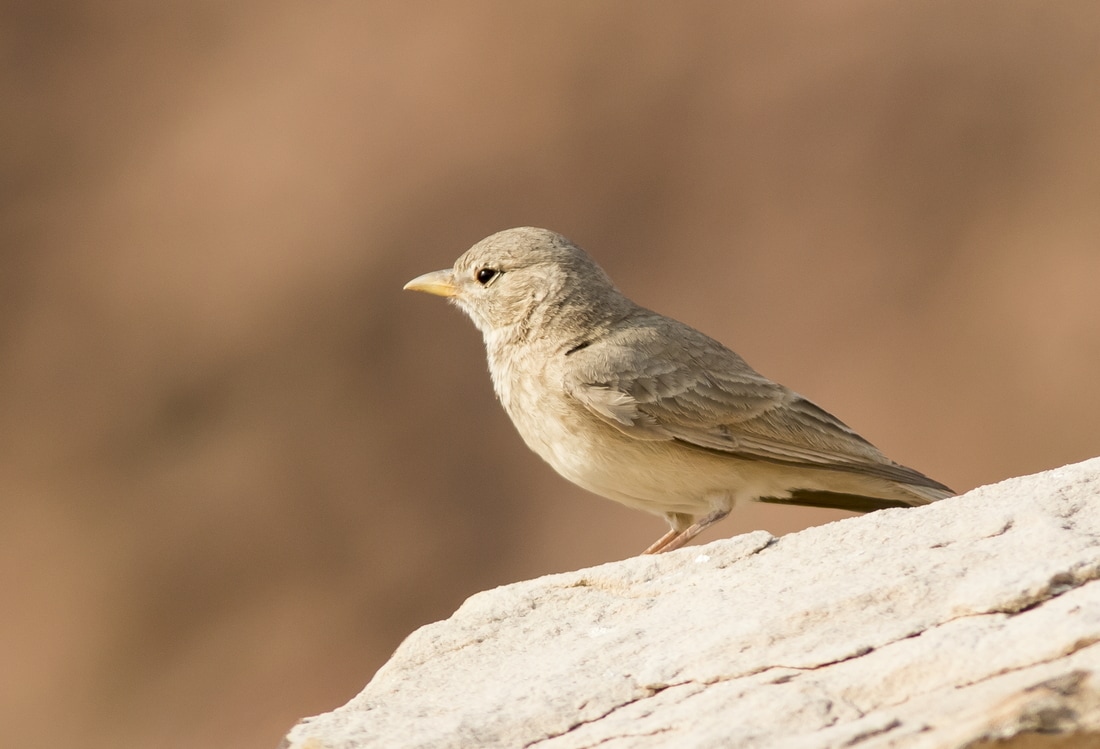
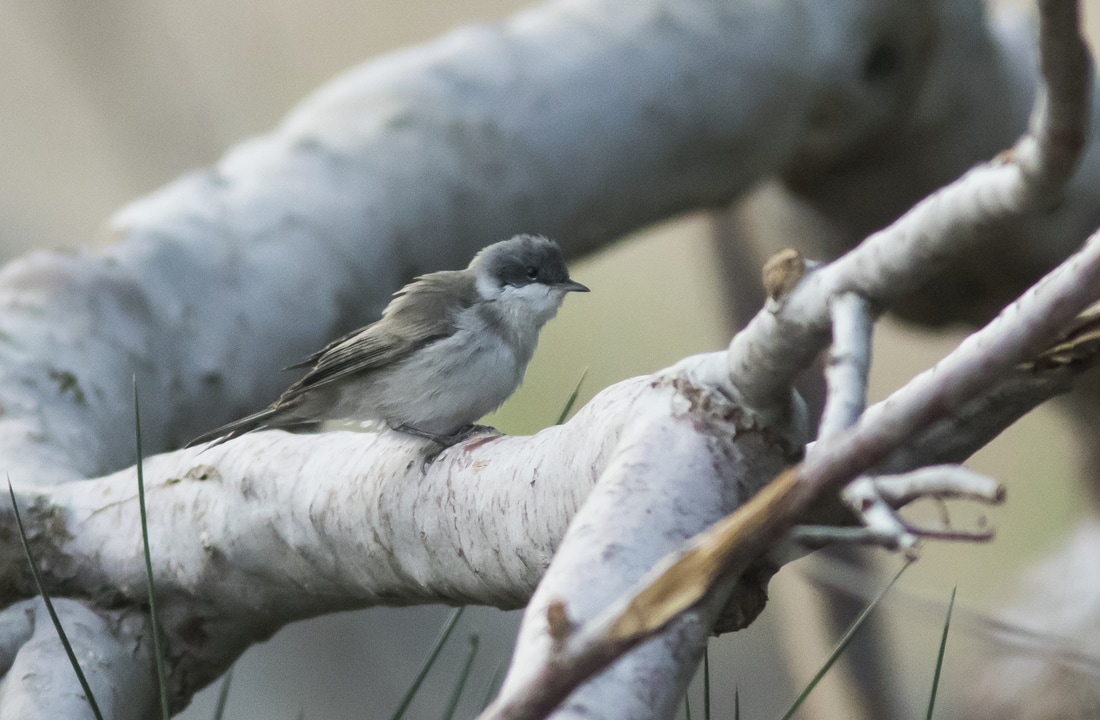
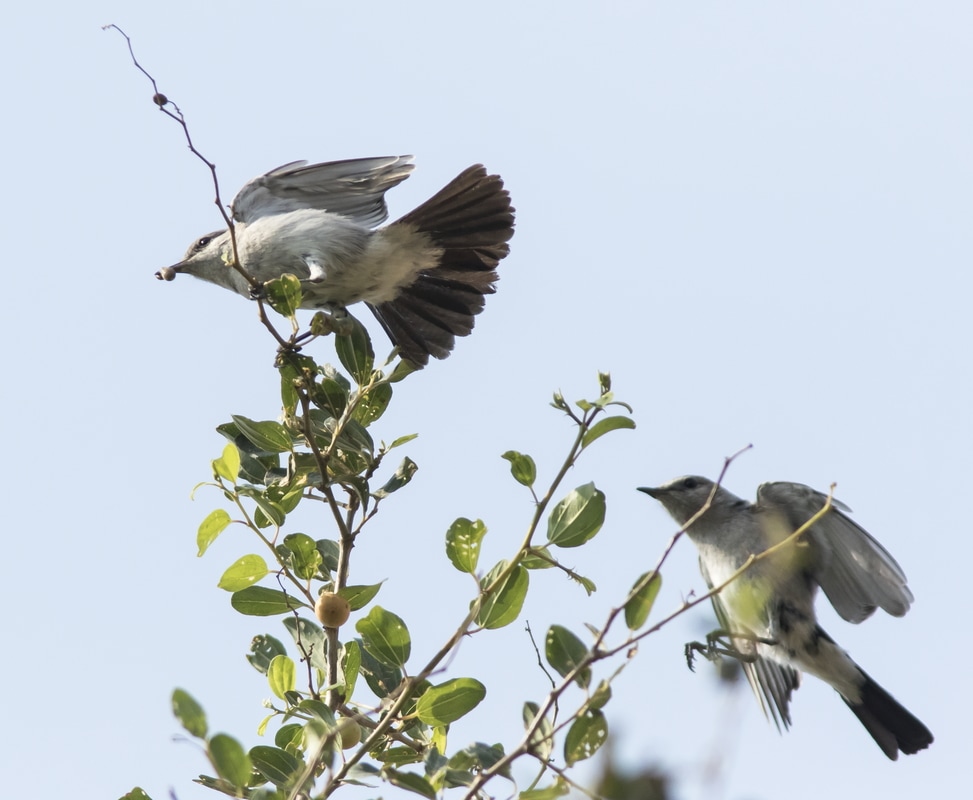
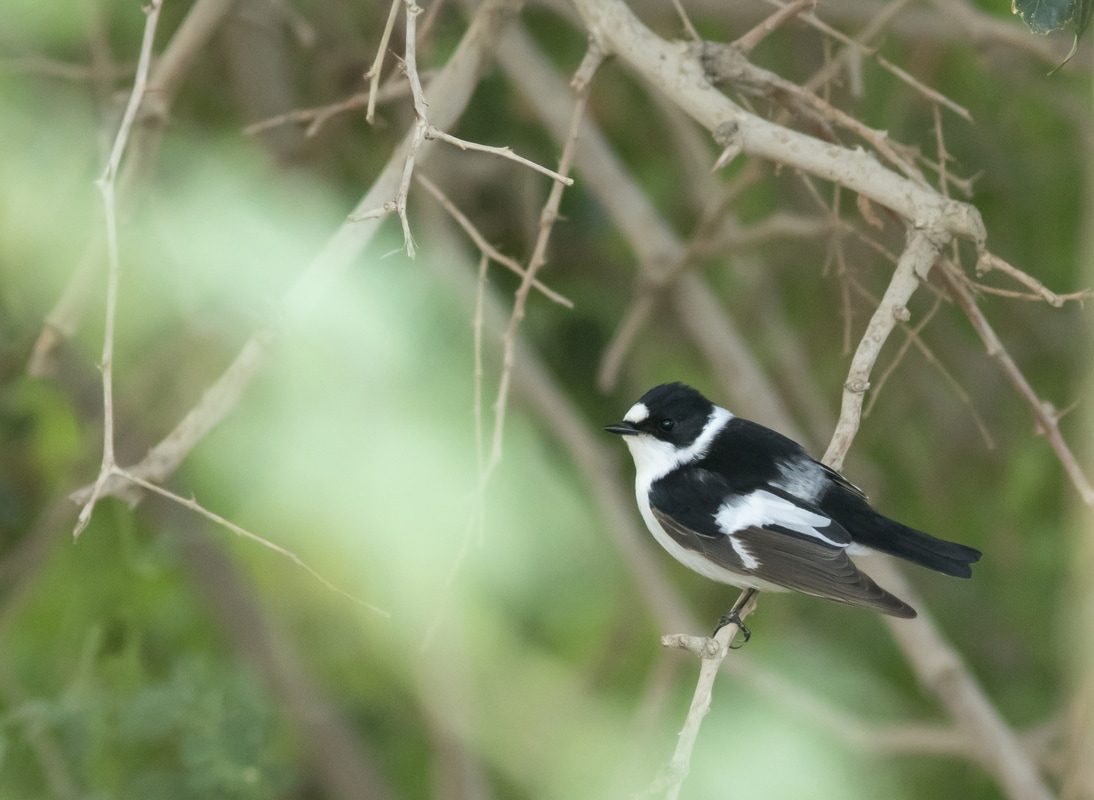
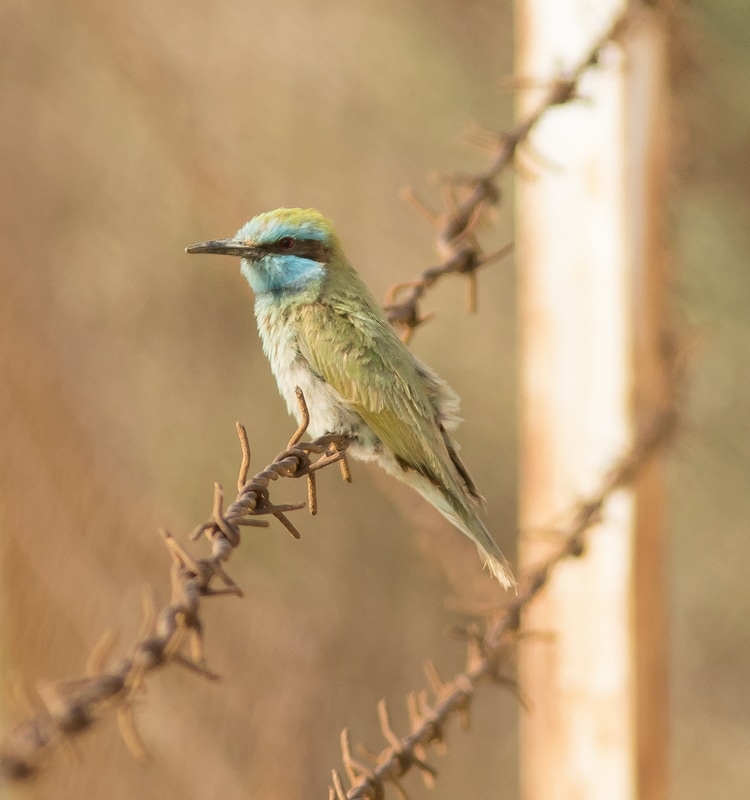
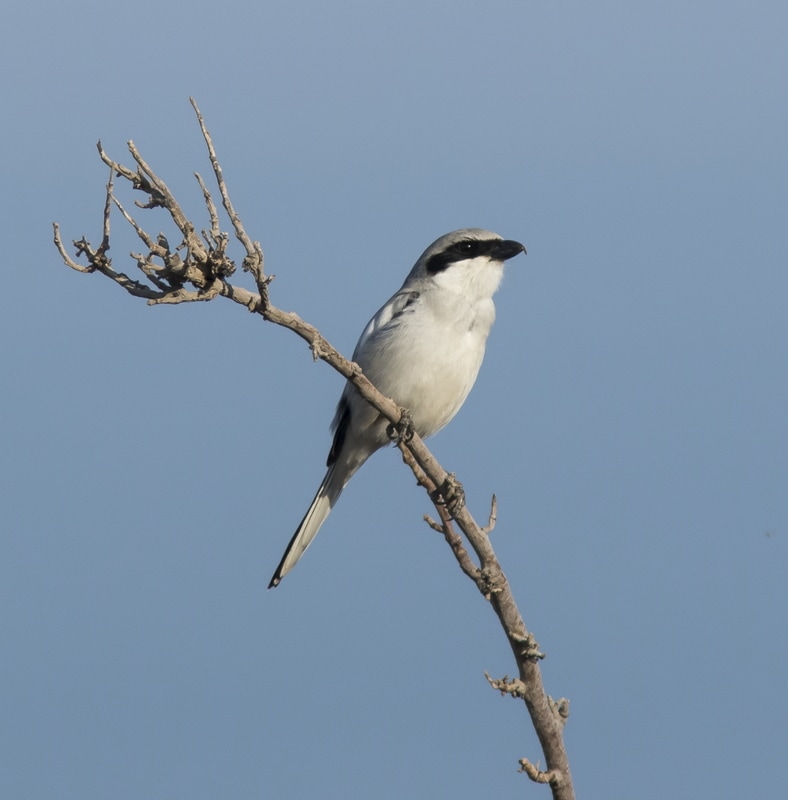
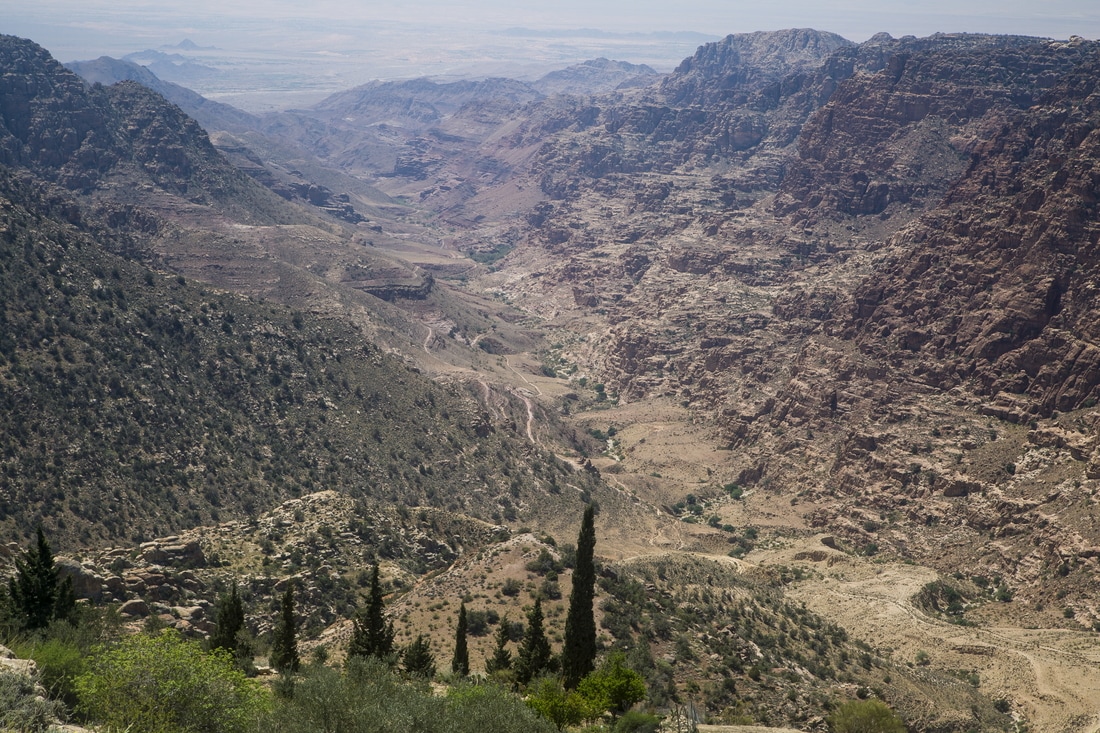
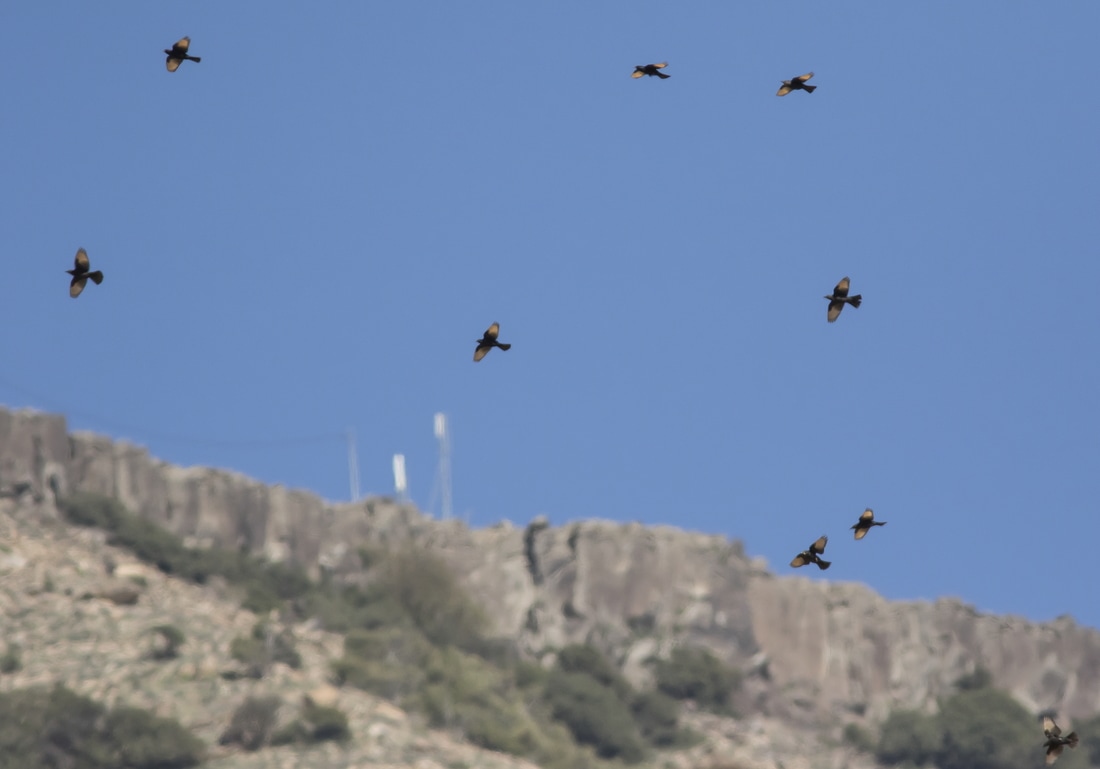
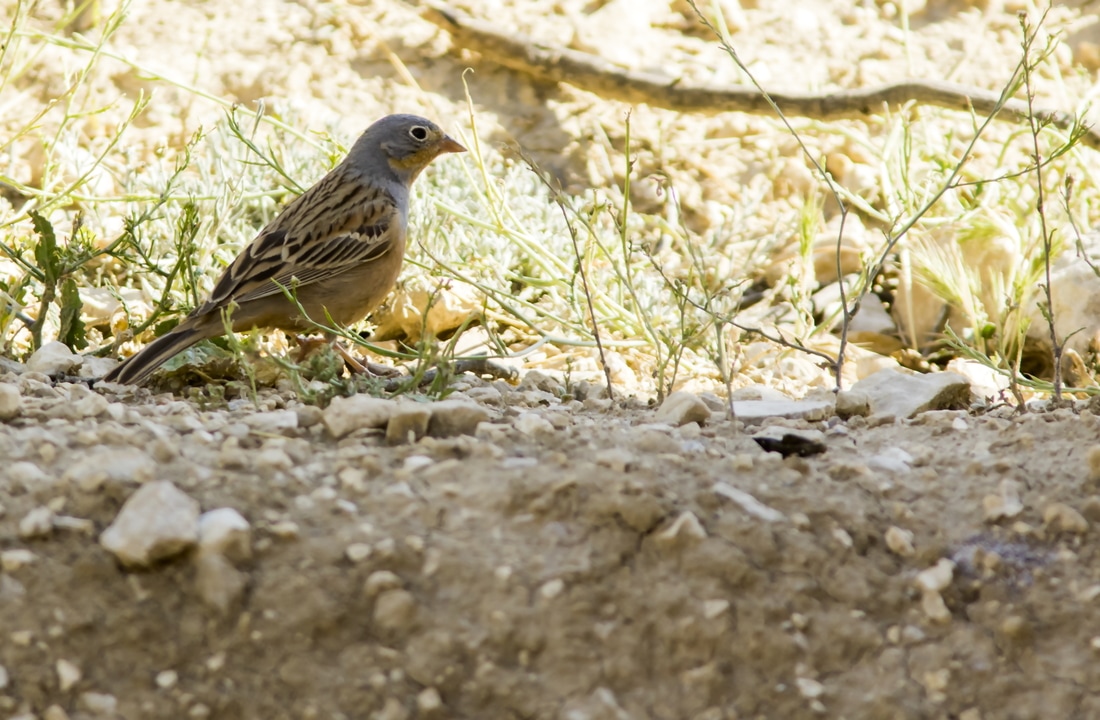
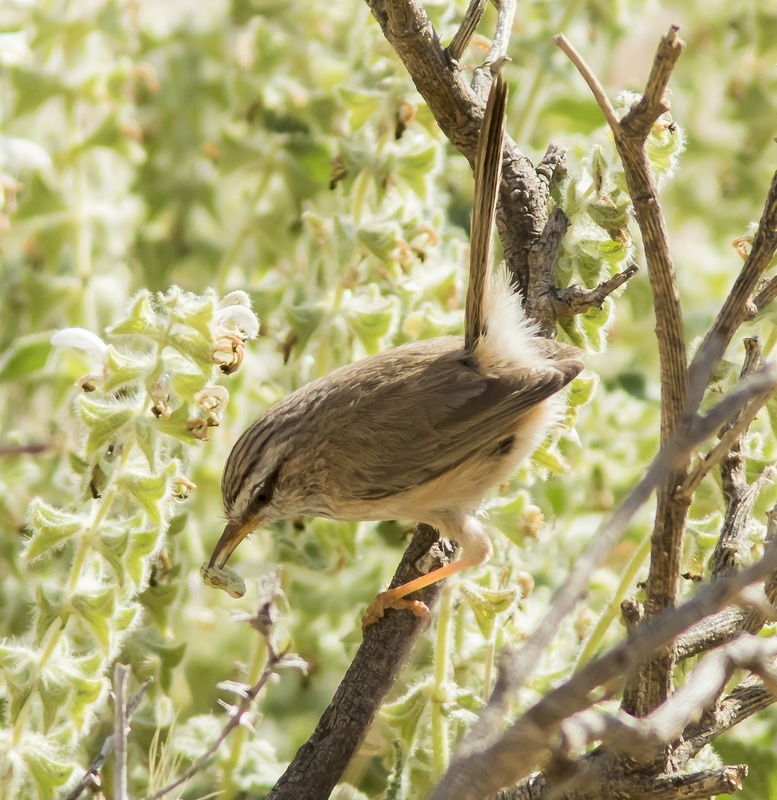
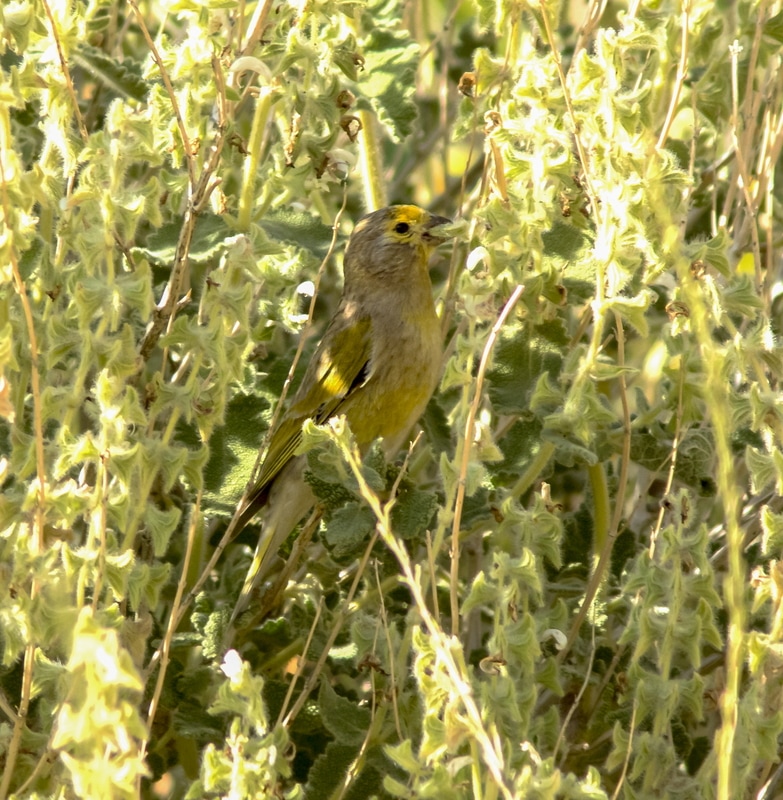
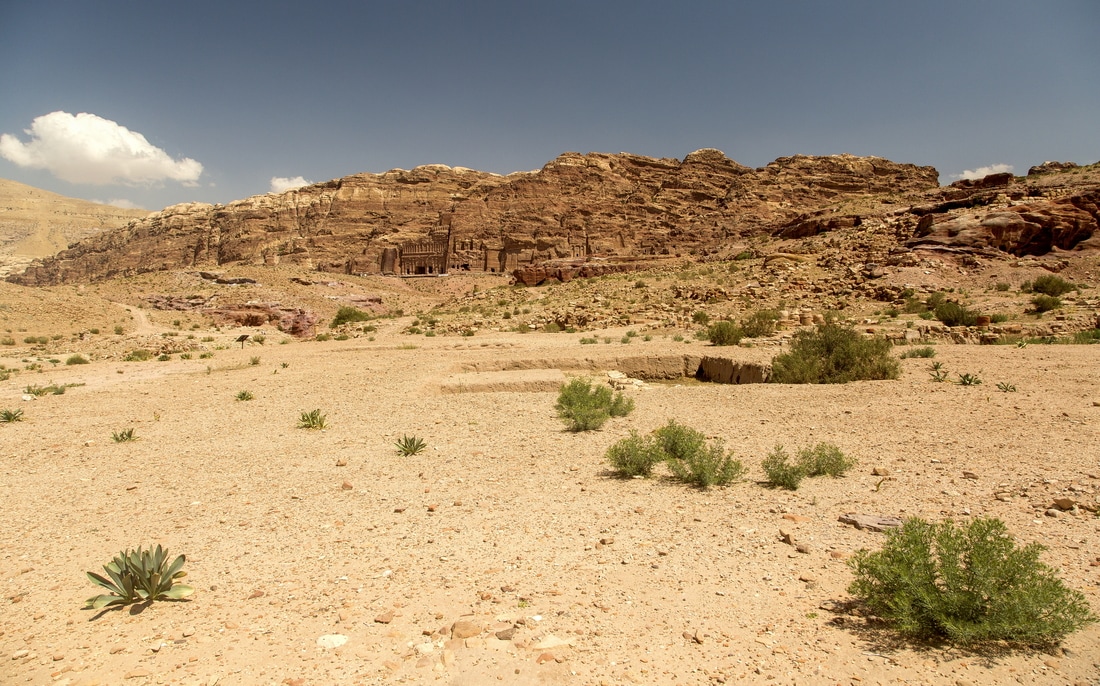

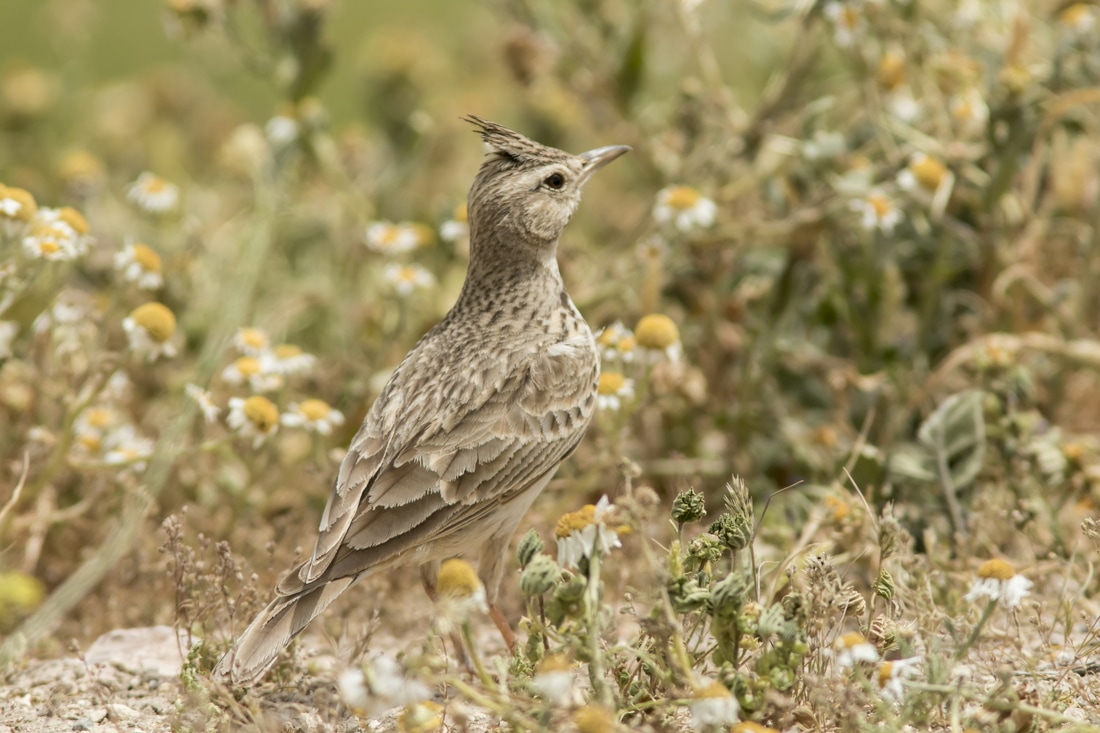
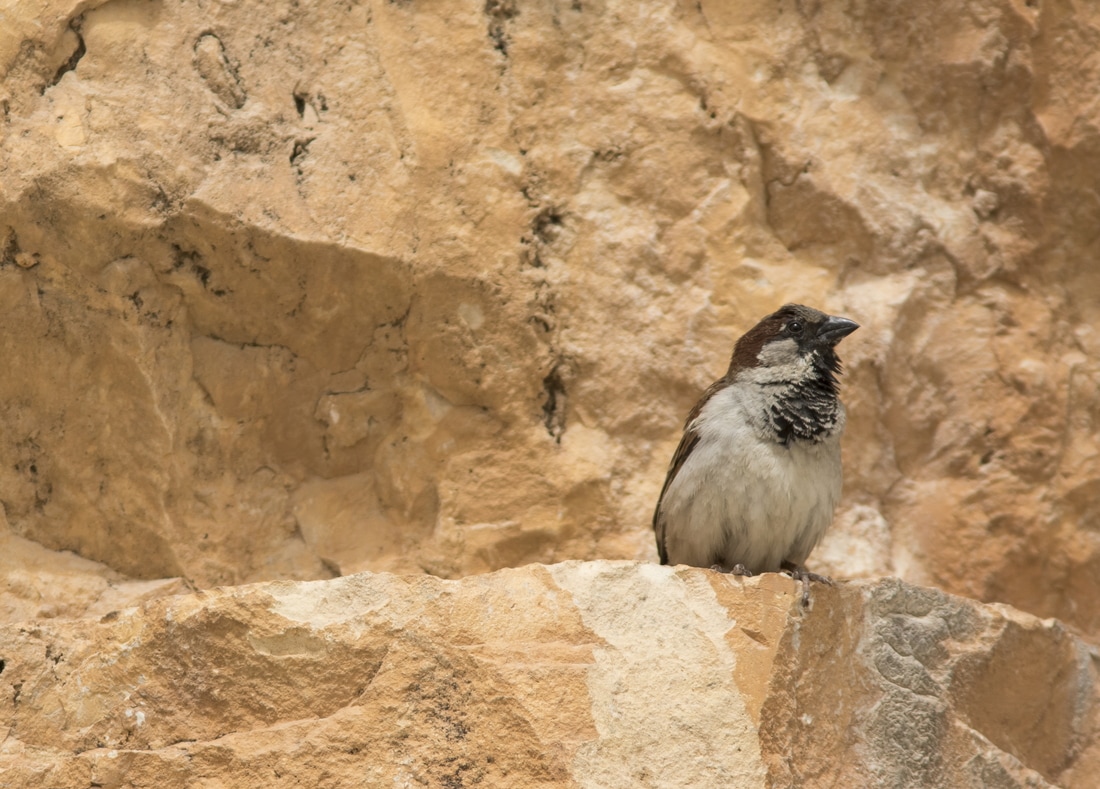
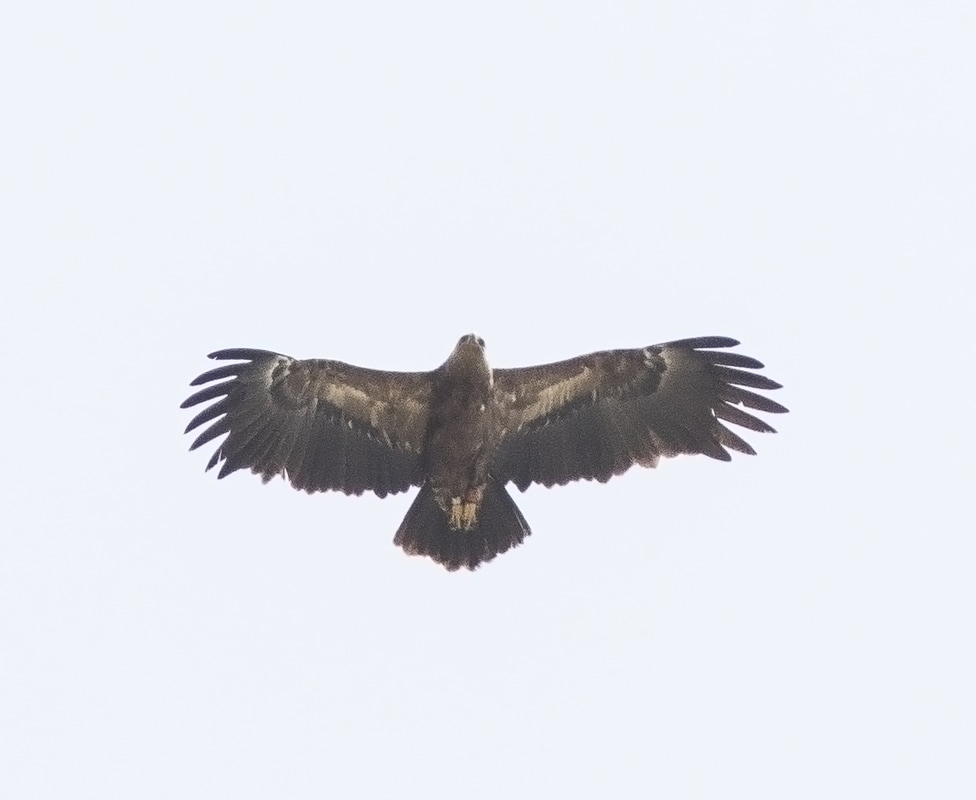
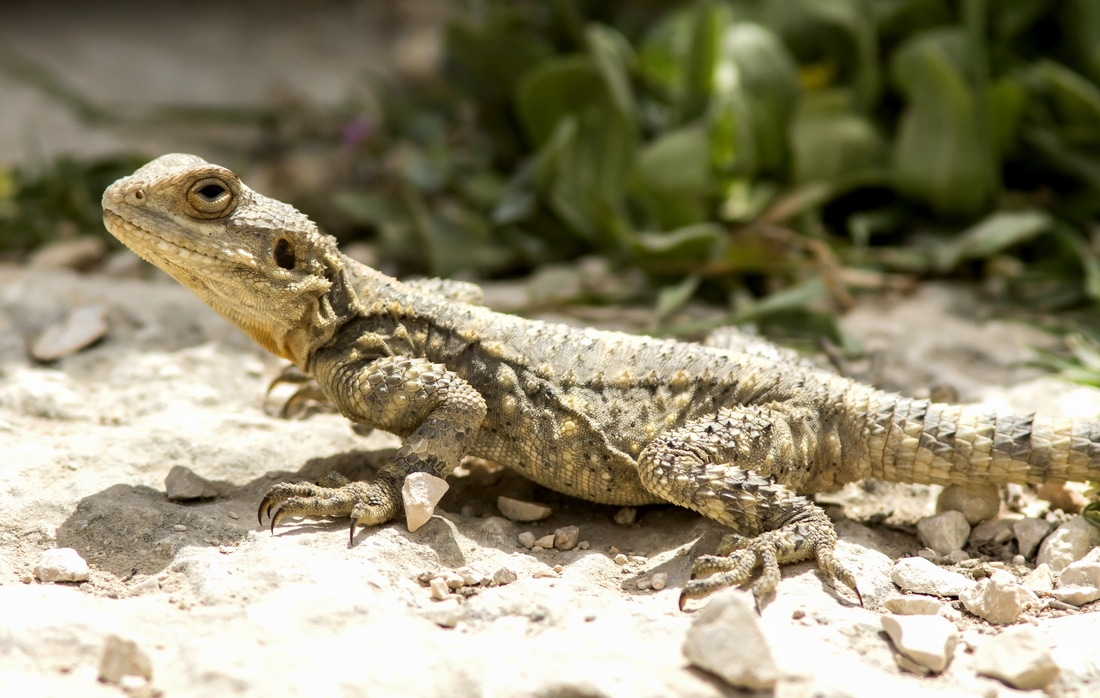
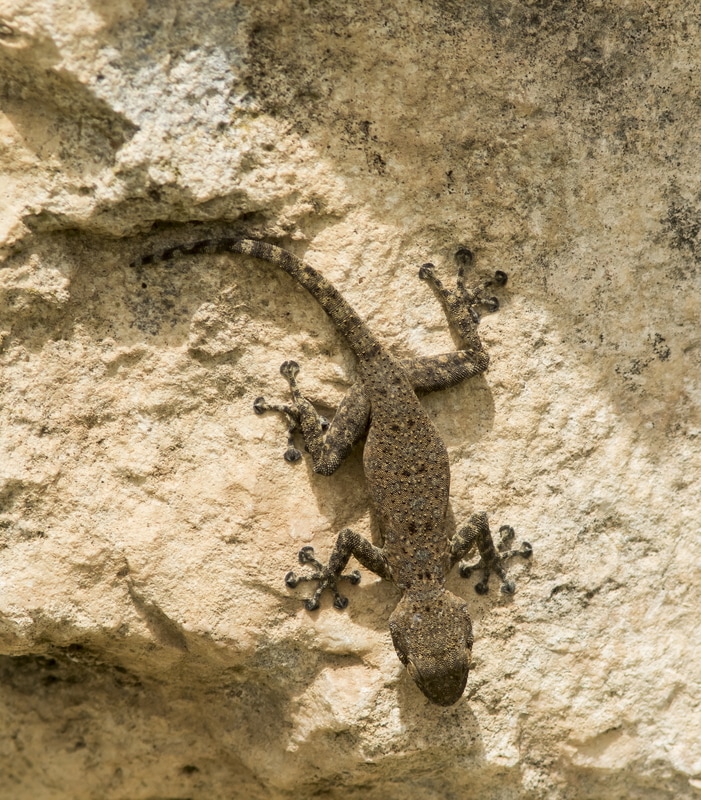
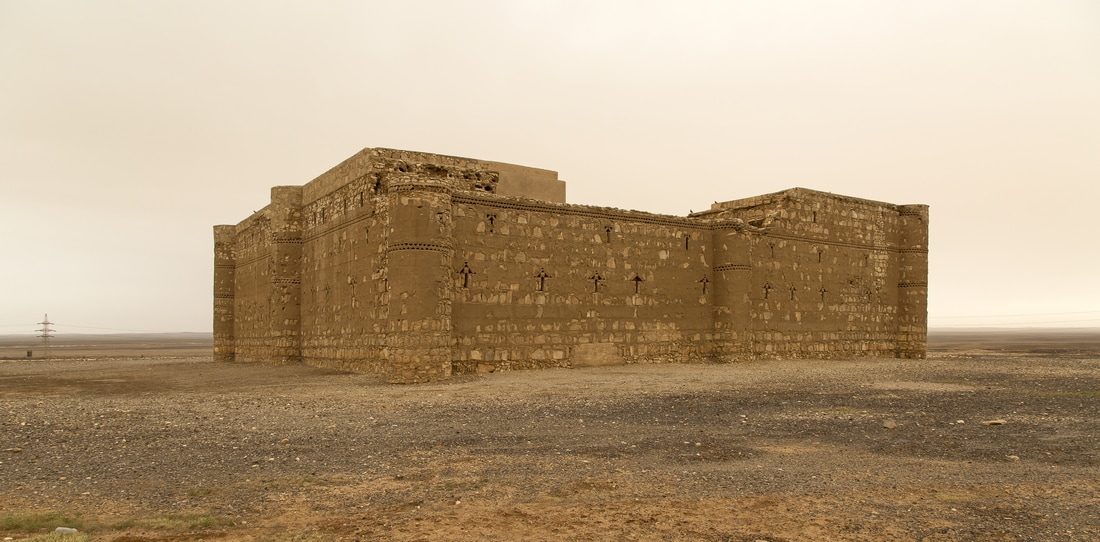
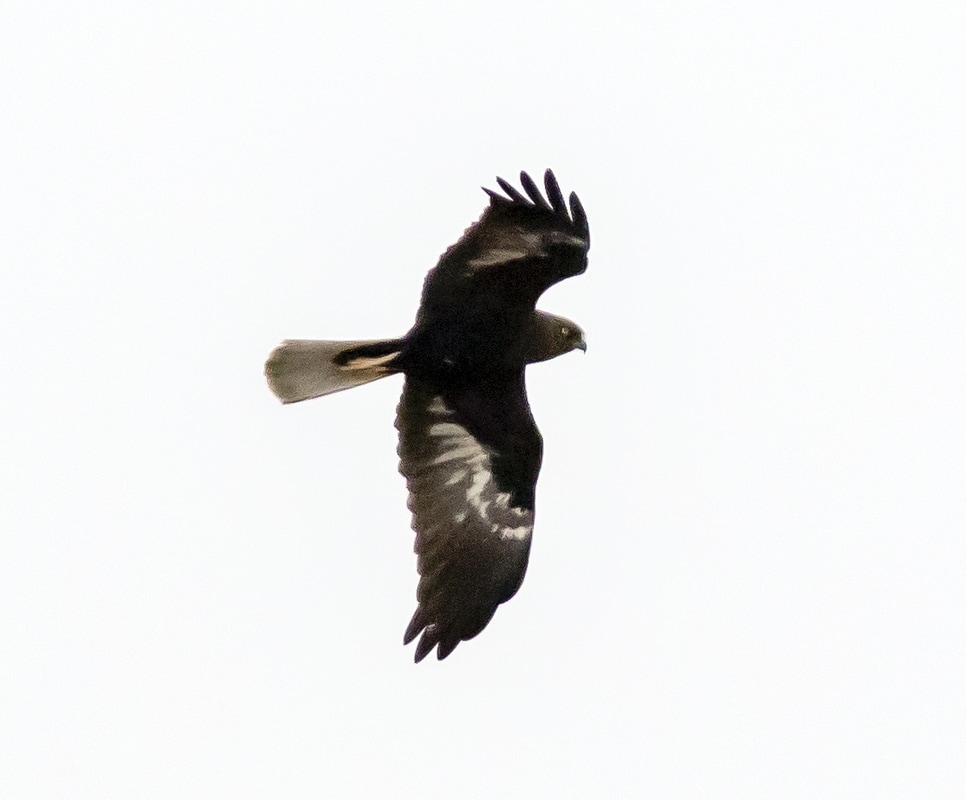
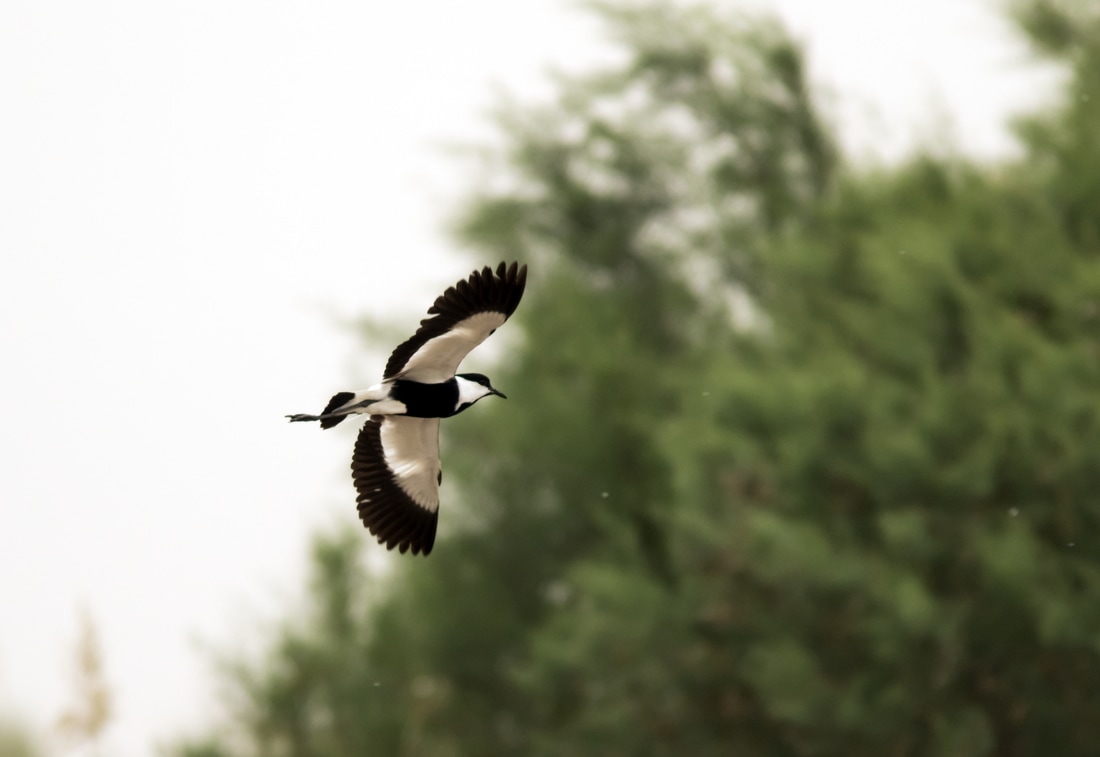
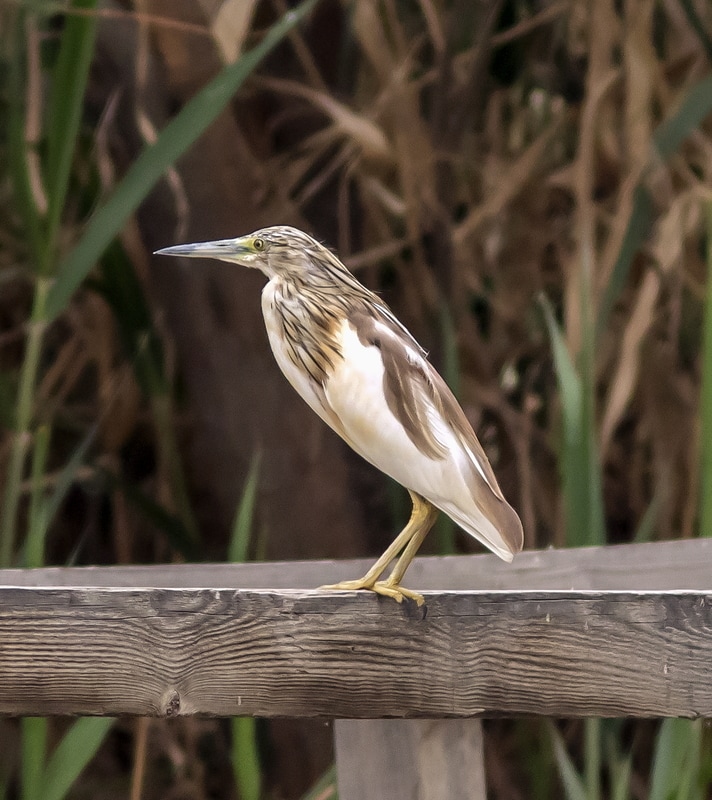
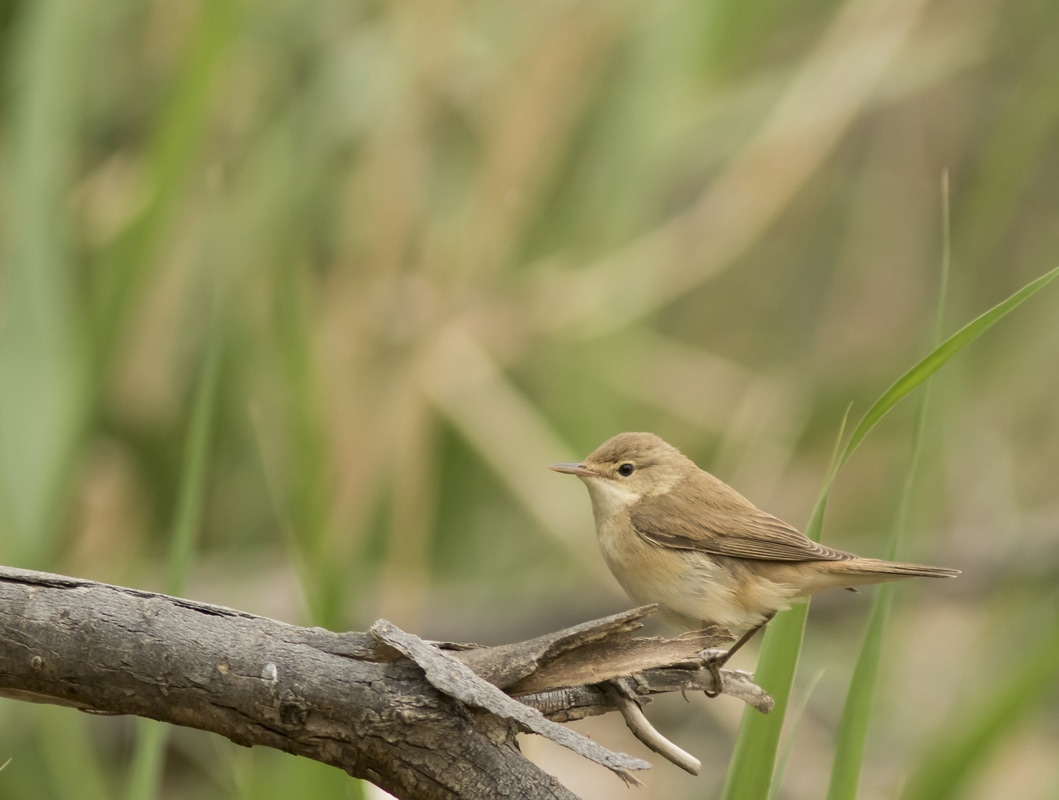
 RSS Feed
RSS Feed
